
April 1 is the deadline to apply for Colorado Mule Deer
Get more info COLORADO MULE DEER INFO
Story from I don’t know where, but good reading:
——————————————
Good Morning,
I just wanted to share with you an amazing end to a great 2007 hunting season. Yesterday I was sitting in my stand on a small food plot just off Colly Swamp in Bladen County . I was enjoying a beautiful sunset and hoping that I might get one more opportunity at a doe to take to the butcher for processing. Then I spotted some movement in a corner of the food plot that was partially blocked from my view by some trees. I was able to tell that a mature doe with two button bucks entered the food plot but I did not think that they would move into an open area for a shot before dark. Suddenly all three deer became alarmed and began looking toward the woods where they had entered the field. The doe then blew at whatever was approaching and turned and bounded into the middle of the field followed by the two smaller deer. Well this gave me a clear line of sight at the doe so I put my crosshairs on her. I started to squeeze the trigger but then I began to wonder if it could be a big Buck that was making the deer nervous. Then the three deer all blew and ran a little further across the food plot, stopped again and looked back on full alert. Well I decided that it was most likely not a buck that had them startled so I shot the doe. When I shot, the two button bucks ran away while simultaneously a 20 pound bobcat ran into the field and put the death lock on the neck of the doe I had just shot. Amazed by what I had just seen, I shucked another (also my last) shell into the chamber. I could not believe that the bobcat was still there after the sound of the shot and me reloading but he had locked onto a big meal and did not intend to give it up. 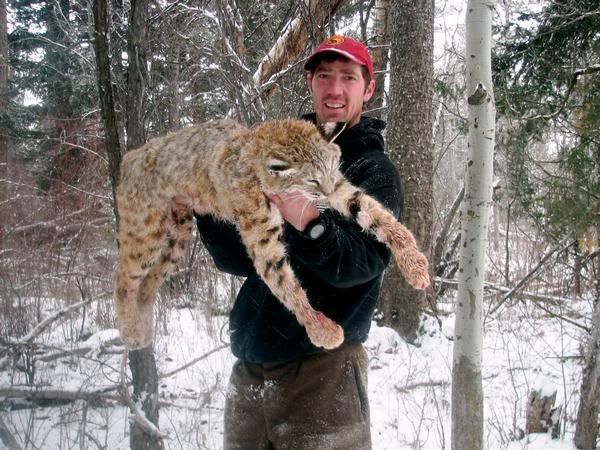 I put the cat in the crosshairs and squeezed off my last round, he did not flinch. I thought I had missed him. I sat still for a little while and then I yelled at the cat to see if he was still alive, I got not reaction. I climbed down from my stand and approached the two animals in the field. The Bobcat still had a death grip on the doe and was looking right at me as I approached, with an empty gun. What I saw amazed me. The Bobcat was stone cold dead but he still maintained his grip on the doe. I called everyone at camp to come look and take pictures. When it was time to load the doe in the truck we had to load both the doe and the bobcat because I could not separate them.
I put the cat in the crosshairs and squeezed off my last round, he did not flinch. I thought I had missed him. I sat still for a little while and then I yelled at the cat to see if he was still alive, I got not reaction. I climbed down from my stand and approached the two animals in the field. The Bobcat still had a death grip on the doe and was looking right at me as I approached, with an empty gun. What I saw amazed me. The Bobcat was stone cold dead but he still maintained his grip on the doe. I called everyone at camp to come look and take pictures. When it was time to load the doe in the truck we had to load both the doe and the bobcat because I could not separate them.

Have you ever wondered what “balance between predator/prey populations” actually means? It means that predators kill all the surplus prey each year without anything left over for humans. Below is Wyoming’s Lion Management Plan:
—————————————–
EXECUTIVE SUMMARY
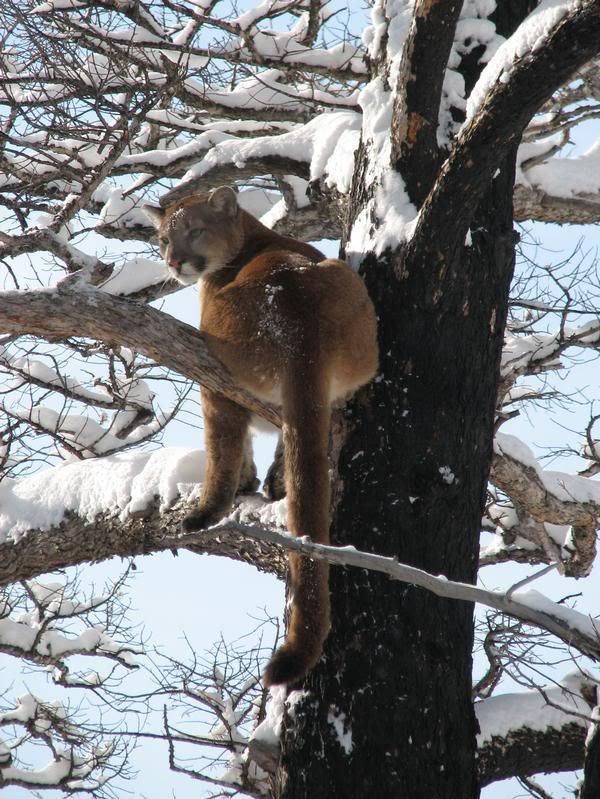 The goal of mountain lion management in Wyoming is to sustain mountain lion populations throughout core habitat at varying densities depending on management objectives to provide for recreational/hunting opportunity, maintain ungulate populations at established objectives or in line with current habitat conditions, and minimize mountain lion depredation to pets and livestock and reduce the potential for human injury.
The goal of mountain lion management in Wyoming is to sustain mountain lion populations throughout core habitat at varying densities depending on management objectives to provide for recreational/hunting opportunity, maintain ungulate populations at established objectives or in line with current habitat conditions, and minimize mountain lion depredation to pets and livestock and reduce the potential for human injury.
The intent of this document is to provide guidelines to direct future management efforts for mountain lion populations in Wyoming and not to specifically address local management issues throughout the state; a process that occurs during the 3 year season setting process, when hunt area specific data are presented in the annual mountain lion mortality summaries. The management approach addressed in this document favors an adaptive management process where management objectives are established based on local biological and social conditions and modified/adapted over time relative to management criteria suggesting whether or not objectives have been met, to achieve balance between predator and prey populations, and address changing social factors related to depredation incidents and human-mountain lion interactions.
Core occupied habitats for adult mountain lions during the winter will be delineated statewide to evaluate impacts from the density of human-caused mountain lion mortalities and to evaluate potential impacts from future development projects. Local (by hunt area) and regional (by Mountain Lion Management Unit-LMU) management objectives will be developed and evaluated based on harvest data. A source-stable-sink adaptive management approach will be applied evaluating (1) density of human-caused mortalities, (2) sex-age composition of mountain lion harvest focusing on relative proportion of adult female harvest, and (3) the relative age of harvested adult females.
Hunt area management objectives will be based on Regional desires to meet localized situations relative to maintaining low population densities (sink), stable population densities, or to maintain areas with low mountain lion mortality to serve as source areas for mountain lion dispersal into areas experiencing negative population growth (sink areas). Sink management will be applied to maintain low mountain lion densities in areas experiencing high nuisance incidents (livestock depredation, human-lion interactions) and areas where ungulate populations are believed to be depressed primarily due to mountain lion predation; stable management objectives will be implemented to sustain long term hunting opportunity; and source management objectives will be applied to areas where nuisance incidents and predation impacts to prey populations are not an issue. Management objectives at the LMU level will strive for a combination of source, stable, and sink management that will allow for the department to sustain mountain lion populations throughout core habitat at varying densities depending on management objectives.
Status of representative source areas will be periodically evaluated to verify that these areas are functioning as source areas for mountain lion dispersal using monitoring.
techniques that can be reasonably applied relative to Department budget constraints. Success of sink management to address nuisance incidents or predation pressures on ungulate populations will be evaluated over time following the adaptive management process outlined in this plan. Similarly, mountain lion population monitoring criteria will be evaluated and modified as information becomes available addressing the utility of the proposed criteria in defining source, stable, or sink mountain lion habitats.
Hunting season structure will be based on mountain lion mortality quotas. Mortality quotas will be established for each hunt area, and the hunting season will be closed when the quota has been met. Most of the hunting seasons will run from September 1 through March 31, with the exception of a few hunt areas with chronic livestock depredations. Hunting with hounds will continue to be allowed. Hunters shall present the pelt and skull of harvested mountain lions to Department personnel within 72 hours of harvest so specific data can be recorded. These data will be used to determine the management status, age and sex structure of harvested mountain lions, distribution of mortalities, hunter effort, hunter success, and to account for and set future mortality quotas. Mortality quotas will be established every 3 years to allow sufficient time to reach management objectives and to permit adequate analysis of potential impacts of specific harvest quotas. The process by which these 3-year mortality quotas are set includes annual data analyses and summary by the Trophy Game Section, internal review and recommendations at the regional level, public review of the recommendations, and final approval by the Commission.
The Department will continue to use a variety of options ranging from no action to lethal removal, which will be assessed on a case-by-case basis, to address mountain lion depredation on domestic livestock and pets and mountain lion/human interactions. All management actions and responses will be documented for future evaluation.
Adaptive management will be implemented to address short and long-term management needs where appropriate, and additional research efforts will be conducted to address other management priorities as funds become available relative to other Department priorities.
A previous draft of this management plan was revised based on comments received from 4 peer reviewers and 73 separate public comments. We thank Brad Compton, Idaho Department of Fish and Game, Fred Lindzey, Wyoming Cooperative Fish & Wildlife Research Unit-retired, Ken Logan, Colorado Division of Wildlife, Dale Strickland, Western Ecosystems Technology, Inc, Cheyenne, WY, and members of the public submitting comments for suggestions on improving this management plan. Comments from peer reviewers were evaluated and most have been addressed throughout the revised document. Comments concerning various aspects of the proposed plan (e.g. surveying all mountain lion license holders for hunter effort data, educating hunters about sexing lions in the field, including all human-caused mortality towards quotas, oppose sink management every 3 years, balance source-sink management and reducing the reporting period for harvested lions to 48 hours) were addressed and included in the plan for consideration by the Commission.
• The Department will continue to update and expand, where feasible, information and education efforts across the state including development of a website to educate hunters on sexing mountain lions in the field, and periodically conducting public attitude surveys of Wyoming residents.
• The Department will begin to survey all mountain license holders to enhance the management database.
• All human caused mountain lion mortalities will be counted towards quotas.
By Gary Lewis
Published: January 22, 2008 12:38PM
“Scientists classify the coyote under the order Carnivorain the family Canidae. Canis latranshas been called the brush wolf and the prairie wolf. Some folks call them song dogs and others call them yodelers. The Aztecs called them coyotl. Ranchers call them trouble at calving time.Right now, I’m calling them hungry.Last month, we headed east and south into the junipers and sagebrush. An inch of grainy snow lay like a blanket on the ground and tracks laced the landscape. Almost every deer track had a coyote track that ran parallel. It looked like the dogs were hunting in packs.
Seldom have I seen such a concentration of coyote activity. A few minutes later, we saw the reason why. Mule deer.  A herd of does bounced away through the junipers. For the rest of the winter, coyotes will be following the deer, antelope and elk herds, preying on the less-experienced fawns and calves.
A herd of does bounced away through the junipers. For the rest of the winter, coyotes will be following the deer, antelope and elk herds, preying on the less-experienced fawns and calves.
It doesn’t take a lot of experience to call in a coyote, but it does take a sanitary setup and a coyote in earshot. Right now, the best coyote hunting is on winter deer and elk range. Wherever deer go when the snow flies, that’s where you’ll find coyotes.
I like edge habitat where agricultural lands butt up against sagebrush and junipers. Canyons and dry washes are like runways for coyotes. A pair or a trio will run the length of a wash, on the prowl for rabbits or deer.
Set up in front of a bush or a tree to break up your outline and post a partner to keep watch in another direction. Often, a coyote circles to catch the scent stream before charging in.
Wear camouflage and a facemask. It’s very important to conceal the shine of your face. But don’t let the facemask break up your peripheral vision, you’re going to need it. A flick of a tail, a pair of ears above the tops of the grass, a flash of fur in the sage — all could be clues that a coyote is coming.
Use the call sparingly. Start with a subtle cry, sustained for about 30 seconds. Wait two minutes, then increase the volume. Call for about 30 seconds at a time and then go silent for about two minutes. If you’re imitating a rabbit or a fawn in distress, remember that these animals have small lung capacity and cries are likely to be of short duration.
On a coyote hunt, I give each set at least 15 minutes. Going through my journals for the last three hunts, the coyotes have been coming at an average of under 31/2minutes on each successful call setup.
On our most recent hunt, we saw eight coyotes. They came in fast and hungry.
Yotey, prairie wolf, yodel-dog — call him what you like, but don’t call him late for dinner.”
HHHH
Gary Lewis is author of “Deer Hunting Tactics” and “Hunting Oregon.
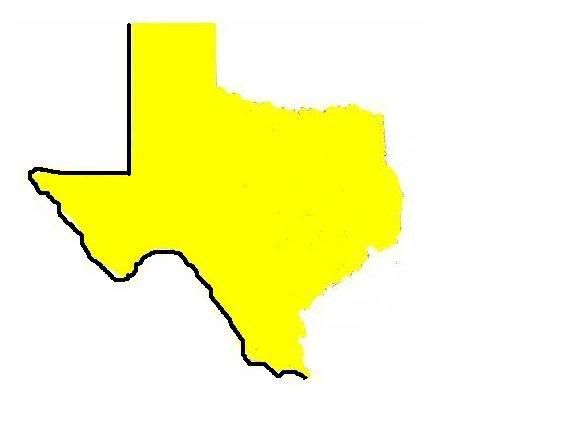
Texas is not known for mule deer like it is for whitetailed deer, but Texans know how to manage deer. Apparently, panhandle mule deer are on the increase.
——————————————
Proposal to Expand Panhandle Mule Deer Season: This proposal would consider adding Sherman and Hansford counties to the northern Panhandle mule deer season, and Gaines, Martin and the eastern portion of Andrews counties to the southwest Panhandle season. Wildlife biologists believe these counties have mule deer populations sufficient to allow the harvest of a few buck mule deer. A buck-only harvest would not affect the overall population, the biologists say. Opening these counties will increase hunter opportunity.

Before the winter even started, five years of drought helped stack the deck against western Wyoming mule deer, said Game and Fish biologist Ron Lockwood.
The extended drought could take a significant toll this year on the Wyoming Range herd — the state’s largest — which winters around Pinedale, Big Piney, Kemmerer and Cokeville.
“The cumulative effect of five years of drought has definitely decreased forage production in mixed mountain shrub habitats, and therefore deer are going into winter in poorer condition,” Lockwood said. “The snow depth and the cold temperatures are going to increase mortality, especially in fawns.”
But the rates of mortality will be determined, ultimately, by how harsh the remainder of the winter is, he said. Before the wintry weather arrived, the deer looked to be in pretty good condition, considering they have been dealing with the drought.
Gavin Lovell, a biologist with the Bureau of Land Management, said the BLM, in cooperation with Game and Fish and other agencies, has been working on improving the habitats where the Wyoming Range herd roams, and they’re starting to see improvements there. But those improvements aren’t going to help deer this winter, as long as the foliage stays buried.
“You can make all the habitat in the world, but once the snow gets deep enough, the wildlife can’t get to it,” Lovell said.
Mild winters
Wyoming’s mule deer population has been increasing for the last couple of years, Schmidlin said, mainly because the animals have endured relatively mild winters.
That trend could change this year.
The Game and Fish regional office in Lander is getting reports of fawns that are too small, that look ill or are underweight as a result of diarrhea, Schmidlin said. Fawns in that condition will have a hard time surviving a harsh winter.
Many of the deer in cities and towns supplement their diets with foliage found around houses and buildings, such as bluegrass and lilacs, especially when other food sources are scarce. This type of vegetation is not as nutritious as the native sagebrush and bitterbrush are for the deer, and might be the cause of, or at least contribute to, the digestive problems in fawns.
Mule deer evolved as browsers, which means they rely predominantly on bushy material for sustenance. Elk, on the other hand, are grazers, and eat more grass.
But elk are also more adaptable than deer, and can switch between different types of vegetation more successfully. Because of this — and because elk are generally hardier animals — Schmidlin doesn’t expect them to struggle as much as deer could this winter.
In the short run, Game and Fish expects some losses to the deer population in the west, but if the cold weather moderates, the rest of the winter could be easier on the herds.

Utah Bear Management – Good for bears, Bad for Mule Deer.
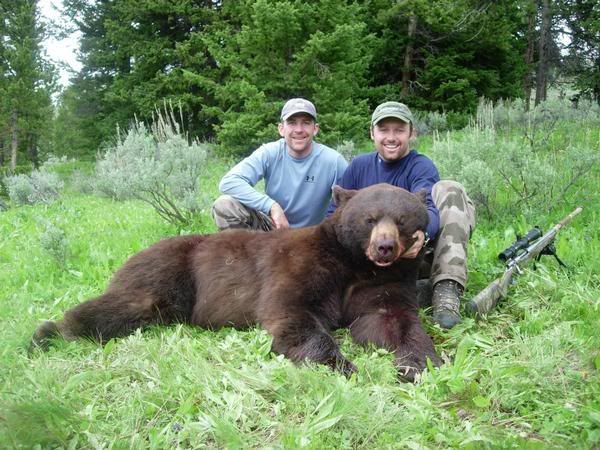
Utah Bear Management Plan (excerpt)
Bear management in Utah is guided by the state’s Black Bear Management Plan. The three major goals of the plan—keep the percentage of female bears taken by hunters below 40 percent; keep the average age of bears taken by hunters above 5 years old; and keep the adult survival rate above 78 percent—were all met in 2007.
When these goals are met we know that Utah Bears are healthy.
This is one of the prettiest sights I’ve seen, so I think I’ll post it a few more times.
What a beauty. It doesn’t get much better.
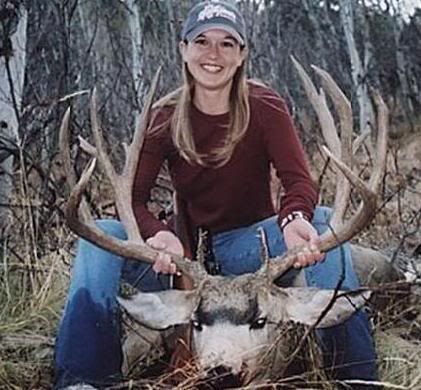

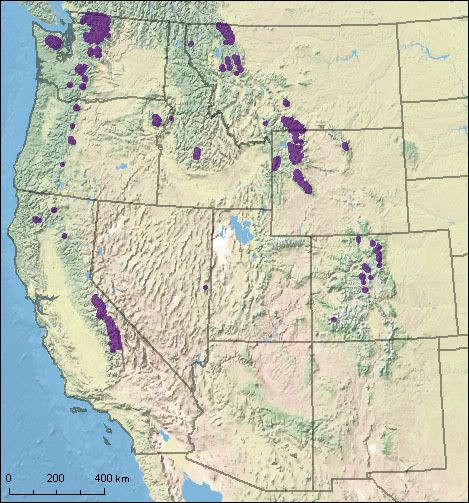
This winter has brought cold weather and deep snow to much of our Mule Deer country. Some of the states are refusing to feed the deer for good reason, and, I might add, taking flack for it from the likes of the Mule Deer Foundation. I could go into a list of reasons why Mule Deer shouldn’t be fed, but instead, I will talk about the feeding program in Colorado.
There are supposedly 21,000 mule deer in the Gunnison Basin. Of those, about 7,000 are being fed. So far, 11% of the ones being fed have reportedly died. More on the way. I don’t yet know mortality rates for the ones that aren’t being fed. The local economy depends heavily on hunting, so between local businesses and the Mule Deer Foundation, the governor has been pressured into allocating $1.7m (without counting donations and volunteerism) for feeding mule deer. How many deer will they save? We’ll see. It is at times like this when special hunts should be considered.
This much is certain: Colorado’s deer herd has been a long time making a come-back, and is still not fully recovered. It would be a shame to save wintering deer and then have them eaten by predators before they could be hunted. Even if some of the deer can be saved from exposure, many of them will be eaten by predators. The older/mature bucks will be hit the hardest. If $1.7m were invested in predator eradication – particularly if it went to hunter/trapper bounties, it would be far more effective in preserving a local economy and a deer herd.